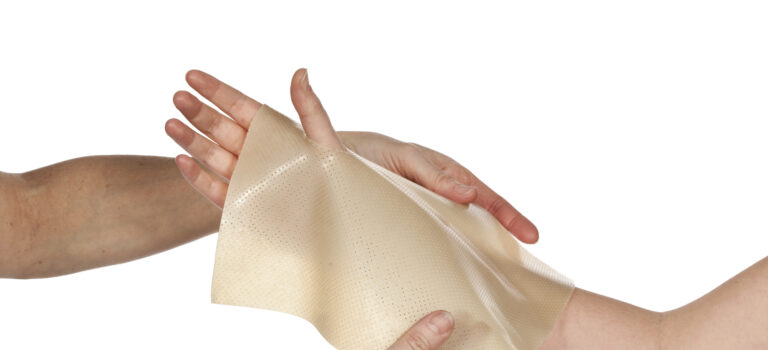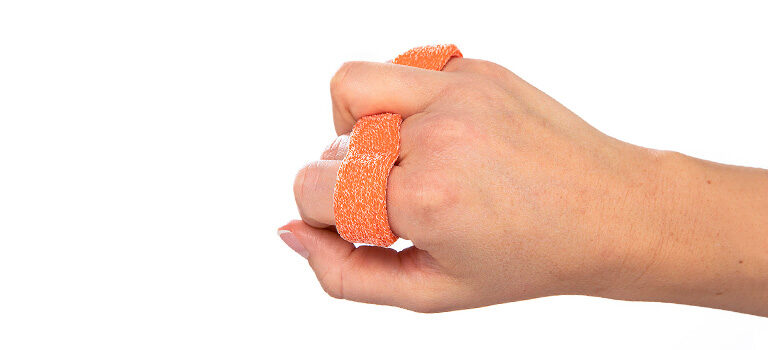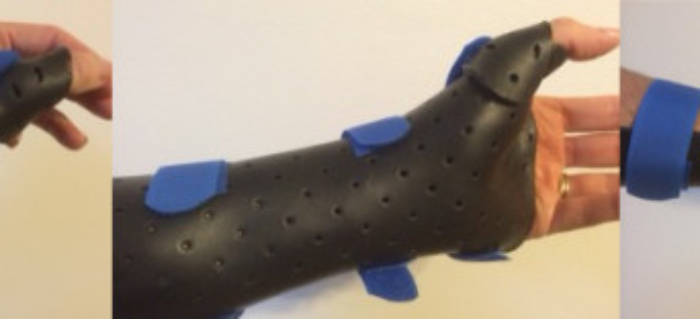
Splint in the Spotlight – Short Thumb Spica (Opponens) Splint

Our Orfit blog shares information and instructions in matching our thermoplastic materials to orthotic designs.
Please check back frequently to gain inspiration and ideas in orthotic fabrication for all of your patient’s needs.
Splint Design: Short Thumb Spica (Opponens) Splint
Objective of the splint: Positioning of the thumb in functional position.
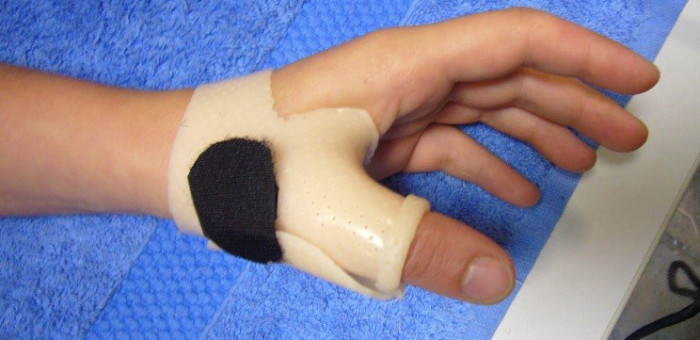
Pathologies:
- Healing after thumb MCP joint sprain;
- Functional splint for basal joint arthritis;
- Median nerve paralysis.
The goals of the Short Thumb Spica are twofold: maintain the thumb in opposition, and preserve the first web space. The Orfit thumb gauntlet (butterfly pattern) addresses both of these goals, but it may be difficult to remove especially when the patient has to wear his orthosis during the night.
In cases of sprain with associated edema, the orthosis needs to be remolded when the edema decreases. It is always beneficial to have several pattern designs to choose from and match the most appropriate orthotic design to the needs of the individual patient. A previous ‘Splint in the spotlight’-post featured the Long Opponens / Thumb Spica Orthosis.
The main differences between the Long Thumb Spica and the Short Thumb Spica are:
- One is forearm based, and the other allows full wrist motion;
- The Short Thumb Spica features a wide tab to wrap around the thumb;
- The distance between the MCP flexion crease of the second finger and the IP flexion of the thumb should be between 6 and 7 cm (2.5” – 3”).
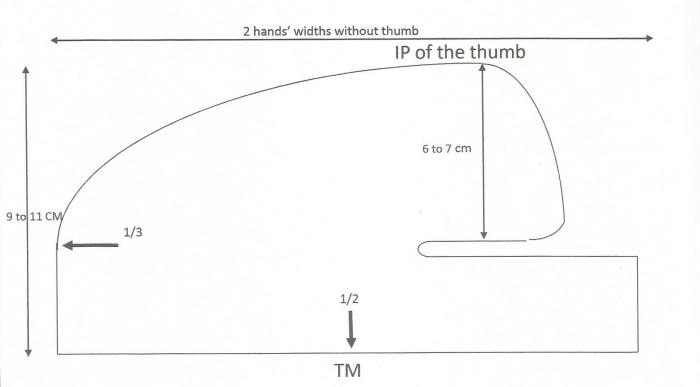
To secure the splint on the ulnar side of the hand, it’s beneficial to use a pulley system for the Velcro as shown in this drawing: the circle which surrounds the hand prevents the thumb from ante and retro-pulsion.

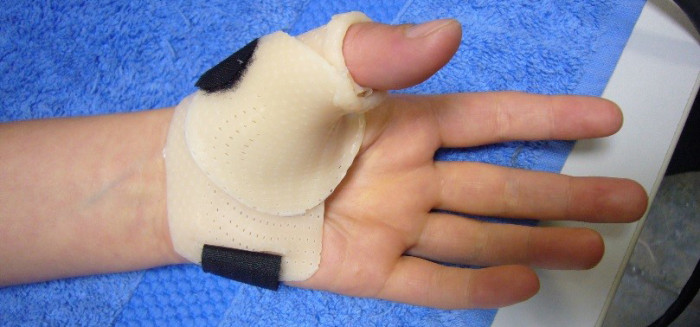
Product Recommendations:
The Short Thumb Spica Splint should be fabricated from a coated (non-stick) product between 1.6 and 2.6 mm (1.6”- 1/12”) thickness: Orfit NS, Aquafit NS, Orfit Colors NS, Orfilight Black NS or the new Orfilight Atomic Blue NS (to be launched soon!) are the excellent materials for this design because they are elastic products.
As shown in the photo, the material overlaps around the thumb and can be easily opened or shut. This allows the wearer to loosen or tighten the orthosis based on comfort and adjust if the thumb is swollen.
Wearing protocol:
Depending on the pathology, the wearing schedule for this orthosis may be as follows:
- Thumb Sprain: day and night during the healing phase, typically 6 weeks duration depending on the severity of the sprain.
- Basal Joint Arthritis: for functional activities during the day.
- If the patient has significant thumb pain, then using a Long Thumb Spica in the resting position at night might be helpful.
- Median Nerve Paralysis: for functional activities during the day and for positioning at night.
Questions?
If you have a question or comment, please post it in the Orfit Splinting & Rehabilitation Group on Facebook, or send an email to welcome@orfit.com.

